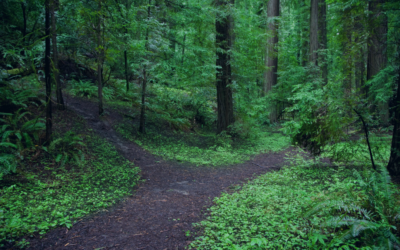Answering the question, “how much does a new ERP cost” can be tricky. But it is key to determining whether now is the right time to replace yours. Often when performing an ERP cost calculation, many people make the mistake of just looking at the obvious costs associated with buying new ERP (enterprise resource planning) solution or the ROI it offers.
However, I would like to argue this approach only looks at a piece of the puzzle and does not give you a full view of your ERP system’s cost. Rather, if you want to know “how much does a new ERP cost.”, you should consider both numbers.
Combined, they give you the true cost. You can calculate this by subtracting the total cost of ownership (TCO) over five years from ROI.
As you can probably imagine, calculating the total cost of ownership and the ROI is not as easy as 2+2. There are several factors that go into calculating both numbers. That is why we made this a two-part blog series. To make the information easier to digest, we will focus on TCO today and discuss ROI next week.
How to Calculate Total Cost of Ownership (TCO)
To calculate TCO correctly, you’ll want to use this formula. Purchase price + implementation costs + operating costs (for the next 5 to 10 years that the new system will be in use). The first two parts of the formula, purchase price and implementation costs are easier to define.
Factors that affect ERP pricing:
- Deployment method: On premise ERPs, those you install and run on your own server or one owned by the hosting provider of your choice will generally charge a yearly or in some cases, a one-time fee for access to the software. If you prefer to avoid large upfront costs, consider a cloud-based ERP instead. Cloud ERP license fees are generally structured as a subscription. This means you can break your license fee into smaller chunks paid monthly. These subscription costs are often easier for businesses to handle, especially small businesses working with tighter budgets.
- Number of users: Almost all the vendors offering popular ERPs adhere to a user-based pricing model. This means they calculate your software license price in terms of the number of users you have. If this is something you’d like to break free from, I suggest you look at Acumatica. They’re the only ERP vendor who allows for unlimited users at no added cost.
Figuring the operating costs for the next 5 to 10 years is where things get a little muddier. A few things you want to make sure you include are:
Hidden ERP costs
- Maintenance and Support Costs: People tend to overlook the ongoing maintenance and support costs that come with owning an ERP system. This includes expenses for software updates, bug fixes, and technical support services.
- Hardware and Infrastructure Costs: Depending on the type of system you’re considering; you may need to factor in the cost of buying and maintaining the hardware and infrastructure you’ll need to run the software. This includes servers, storage, networking equipment, and other hardware components.
- Integration Costs: Another cost that’s easy to overlook is the cost of integrating the ERP system with other systems and applications that your organization uses. This includes expenses for data migration, system integration, and testing.
- Business Process Re-engineering Costs: Implementing an ERP system may require changes in your business processes to optimize the system’s functionality. Hidden costs that may come with this include process analysis, redesign, and re-engineering.
- Operational Costs: ERP costs don’t stop on your go live date. There are also costs associated with operating the system on a day-to-day basis that must be part of the equation. These include expenses for licenses, user training, system administration, and ongoing support.
- Upgrades and Customizations: You can’t simply implement a new ERP and then forget about it. Down the road, there will be upgrades and customizations that must be done to ensure your new ERP system continues to meet its full potential. Possible costs to consider include software updates, new modules, and customizations to meet your organization’s specific needs.
- Retraining and New Hire Costs: For an ERP to do its job, your employees must use it in their everyday work. So, when calculating the TCO of a new ERP, you’d be remiss to overlook the cost of retraining your employees on it.
Learn more about hidden ERP costs.
By taking these factors into account, you can arrive at a more accurate estimate of the total cost of ownership for the ERP system over the next 5 to 10 years. This will help you make a more informed decision when choosing an ERP system and budgeting for its implementation and operation.
Keep in mind, the costs I mention above are only the hidden costs associated with buying a new system. The flip side of that coin are the hidden costs that come with keeping an outdated ERP. Watch this ninety second video to learn more.
It’s true, some of the hidden costs we outline here are hard to calculate. But they are still important factors to be aware of when deciding whether to keep or replace your ERP.
With so much to think about, calculating the total cost of ownership for a new system can seem like a difficult task. But it doesn’t have to be, this ERP total cost of ownership calculator can help.



